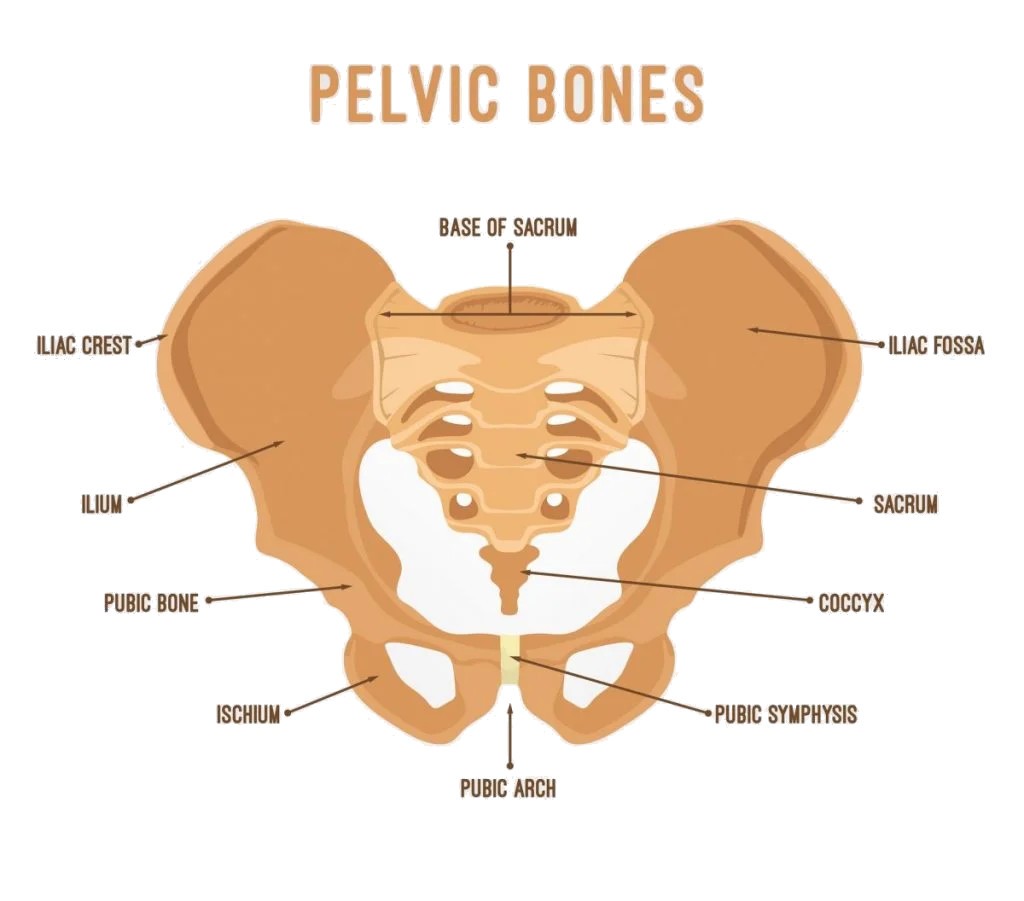Vestigiality
Junk science
Evolutionists believe that some organs or bodyparts, which are believed to have lost some or all of their function, are the useless remains of evolution. It's called vestigiality. Charles Darwin said:Rudimentary organs ... are useless, or nearly useless, and consequently are no longer subjected to natural selection.Evolutionist Douglas Futuyma said thatvestigial structures make no sense without evolution.If evolution were true we would expect to see many useless remains of bodyparts in practically all life forms. However, with the advancement of science we are discovering more and more functions of bodyparts once believed to be useless. And if some bodyparts have lost some of their function it is not evidence for evolution, but rather for evolution in the wrong direction, i.e. degeneration.
Flightless cormorant
source
Fanatic evolutionist and atheist Richard Dawkins said that vestigial organs areone of Darwin's key arguments.He uses the flightless cormorant as a perfect example. However...
Flightless cormorants are water birds with elongated bodies, short legs with large webbed feet, and long necks with long, hooked bills used for catching fish underwater. They are fully functional animals which don't need to fly, just like penguins for example. Their wings are smaller to improve their buoyancy which facilitates underwater pursuit of fishes*. Their wings are designed such that they contain a layer of insulating air and only the outer layer becomes wet when they go underwater. They spread their wings in the sun to dry and enjoy some warm sunbeams after a cold dive. And perhaps there are other reasons we simply don't know about, because science is limited and evolutionists are not very eager to find any uses because it would undermine their so-called "evidence" for evolution.
Even from an evolutionary point of view it doesn't make sense that once fully functional wings evolved into non-functional wings, but evolutionists believe it nonetheless, making up all kinds of silly arguments to fit with that belief. Ignorant and arrogant evolutionists like Richard Dawkins are a disgrace to science and he's a good example of what happens to people stuck in paradigm paralysis.
The appendix
In his book Why Evolution Is True fanatic evolutionist Jerry Coyne wrote:we humans have many vestigial features proving that we evolved. The most famous is the appendix.However...
The lowly appendix, long-regarded as a useless evolutionary artifact, won newfound respect two years ago when researchers at Duke University Medical Center proposed that it actually serves a critical function. The appendix, they said, is a safe haven where good bacteria could hang out until they were needed to repopulate the gut after a nasty case of diarrhea, for example.*
As opposed to what silly evolutionists tell the world, the appendix has a very important function, it serves as a storehouse for probiotics and provides a variety of immune-related functions. These functions are of course downplayed by fanatic evolutionists like Jerry, because true science is not their business. Loosing bodyparts or functions of bodyparts is not making the life form better fit for survival, but contrary to their own theory, hardnosed evolutionists will try to make themselves and the world believe so. Vestigial bodyparts might just as well be explained as degeneration, the opposite of evolution.
Tailbone
According to evolutionists in the 21st century...
Though it’s currently useless, the human coccyx—commonly referred to as the tailbone—remains nestled at the bottom of the spine, a remnant of our tailed ancestors. Long before human tail-lessness, our early fish relatives had two: A fleshy one and a more flexible fin. As animals took to land, they lost the back fin and kept the fleshier appendage.*
As opposed to what silly evolutionists tell the world, the tailbone is not useless, it is essential for all life forms that have it. The Coccyx is an attachment point of a number of muscles at the pelvis. We need it for upright locomotion. It would be catastrophic if it went away. Evolution theory is literally cobbled together with silly just-so stories.
Wisdom teeth
Charles Darwin:
It appears as if the posterior molar or wisdom-teeth were tending to become rudimentary in the more civilised races of man.
According to evolutionists...
Anthropologists believe wisdom teeth ... were the evolutionary answer to our ancestor’s early diet of coarse, rough food – like leaves, roots, nuts and meats – which required more chewing power and resulted in excessive wear of the teeth. The modern diet with its softer foods, along with marvels of modern technologies such as forks, spoons and knives, has made the need for wisdom teeth nonexistent. As a result, evolutionary biologists now classify wisdom teeth as vestigial organs, or body parts that have become functionless due to evolution.*
Evolution theory dumbs down those who believe it. In the modern world people still eat food like "leaves, roots, nuts and meats". And as if those "brute ancestors" didn't have a cooking stove and cooking utensils and were gnawing tree trunks to survive. What a way to think of your forefathers.
It is now widely acknowledged today that these teeth are not rudimentary or vestigial: they aid in chewing our food as do all of our other 28 teeth. The outdated vestigial organ conclusion, though, has influenced the extraction of billions of teeth, the removal of many which may have been unnecessary according to current research.
Third-molar surgery or the removal of the impacted third molars is a multibillion-dollar industry generating significant income for the dental practitioners, particularly oral and maxillofacial surgeons. It is driven by myths and misinformation that have been exposed before but that continue to be propagandized by the profession.
Many evolutionists sell wisdom teeth as useless remains of evolution presenting the world with their common just-so stories to fit with their evolutionary worldview. But wisdom teeth simply aid in chewing. Today wisdom teeth are no longer pulled for no reason, but only when they cause pain or trouble.
Body hair
According to evolution theory...
Reduced body hair enhanced the cooling capacity of sweat, a crucial adaptation in our ancestors’ hot, savanna-like environments. ... Researchers think fur loss coincided with eccrine gland gain in our evolutionary story, as paired adaptations for better sweating. But the details on when and how are still patchy.*
And now humans wear clothes to not get cold and they invented deodorant to prevent sweating. There are evolutionary just-so stories without end. However...
Androgenic hair provides tactile sensory input by transferring hair movement and vibration via the shaft to sensory nerves within the skin. ... Androgenic hair extends the sense of touch beyond the surface of the skin into the air and space surrounding it, detecting air movements as well as hair displacement from contact by insects or objects.
A hair plexus or root hair plexus is a special group of nerve fiber endings and serves as a very sensitive mechanoreceptor for touch sensation. Each hair plexus forms a network around a hair follicle and is a receptor, which means it sends and receives nerve impulses to and from the brain when the hair moves.
The function of body hair is even on biased Wikipedia.
Goose bumps
According to evolution-infested mainstream science...
Goosebumps are a physiological phenomenon inherited from our animal ancestors, which was useful to them but are not of much help to us.*
However, science is slowly catching up...
Goosebumps, by causing hairs to stand erect, extend the reach of our tactile sense to it's maximum distance beyond the skin. They also cause the hair shafts to separate which reduces the amount of dampening of movements and vibrations, thus increasing sensitivity to small stimuli.
When a person is confronted with fear or cold, muscle fibers contract in the skin, forming goose bumps. This muscular activity produces heat, and thus raises the body temperature.
Blood vessels leading to the skin capillaries become narrower - they constrict - letting less blood flow through the skin and conserving heat in the body.
The sympathetic nerve reacts to cold by contracting the muscle and causing goosebumps in the short term, and by driving hair follicle stem cell activation and new hair growth over the long term.*
Evolutionists say that goosebumps are useless. Someone who commented on a fanatic evolution blog asked:
How is it possible that people who live immersed their whole lives in the sensory input from their hairs not notice? How can academics who study the evolution of human skin and hair not recognise the connection between goosebumps and the touch sensitivity of hairs?*
It has something to do with paradigm paralysis and disingenuity.
Junk DNA
According to fanatic evolutionist Richard Dawkins...
It is a remarkable fact that the greater part (95 per cent in the case of humans) of the genome might as well not be there, for all the difference it makes.
In this book, hailed by many evolutionists and atheists around the world, he said that 95% of the human genome is useless junk. This man used to be "Professor for the Public Understanding of Science at Oxford University" and he is of course hailed by many like-minded atheists around the world who base their conclusions on the evolutionary worldview and they refuse to see any other explanations. However...
source
Pseudogenes have long been labeled as "junk" DNA, failed copies of genes that arise during the evolution of genomes. However, recent results are challenging this moniker; indeed, some pseudogenes appear to harbor the potential to regulate their protein-coding cousins. Far from being silent relics, many pseudogenes are transcribed into RNA, some exhibiting a tissue-specific pattern of activation.
The human genome encodes the blueprint of life, but the function of the vast majority of its nearly three billion bases is unknown. The Encyclopedia of DNA Elements (ENCODE) project has systematically mapped regions of transcription, transcription factor association, chromatin structure, and histone modification. These data enabled us to assign biological functions for 80% of the genome, in particular outside of the well-studied protein-coding regions.
Researchers linked more than 80 percent of the human genome sequence to a specific biological function and mapped more than 4 million regulatory regions where proteins specifically interact with the DNA. These findings represent a significant advance in understanding the precise and complex controls over the expression of genetic information within a cell. The findings bring into much sharper focus the continually active genome in which proteins routinely turn genes on and off using sites that are sometimes at great distances from the genes themselves. They also identify where chemical modifications of DNA influence gene expression and where various functional forms of RNA, a form of nucleic acid related to DNA, help regulate the whole system.
Junk DNA has traditionally been defined by what it isn't. It's the bits of the genome that don't code for the strings of amino acids that form proteins. It was dismissed for a long time as having no function. Which is a pretty classic example of the surprisingly common phenomenon in biology where, if we don't know something, we assume there is nothing to know. Whoops.*
Thanks to true science much of the genome that is being disputed by critics is shown to be involved in epigenetic regulation such as gene expression and appears to be necessary for the development of complex organisms.it's a lot more complex than we ever thought.* With time true science discovers more and more specified complexity in the design of life. Junk DNA is another example where evolutionists with their preconceived belief obstruct scientific research in the field of genetics. Professor Chris Ponting said thatamazingly, there were calls from some sections to only map the bits of genome that coded for protein - mapping the rest was thought to be a waste of time. It is very lucky that entire genomes were mapped, as this work is showing.*
Here's another example of a fanatic evolutionist showing contempt for true science...
According to an evolutionitwit...
Skepticism has arisen spontaneously from all over the scientific blogosphere, facebook, and twitter. You see, most of us scientists know that ENCODE is using an extremely liberal and dubious definition of "function", basically meaning "some detectable chemical activity". ... All the evidence for relative nonfunctionality which has been known for decades is still there and hasn't really changed. ... But I'm beginning to think that certain parts of molecular biology and bioinformatics are populated with people who are very smart, but who got through school with a lot of detailed technical training but without enough broad training in basic comparative biology.*
Panda's Thumb is a fanatic pro-evolution blog supported by the world of mainstream science. Nick Matzke is a fanatic evolutionist who is closely related to NCSE*. In this article he tries to downplay the hardcore scientific research done by the prestigious Human Genome Project. He even goes so far as to say that those scientists need more indoctrination from "comparative" biology. As its name already suggests "comparative" biology is based on metaphysics and the unprovable philosophy naturalism while the research he criticizes is true science.
Here's a useful bodypart especially for those evolutionary junk scientits who rape true science...







